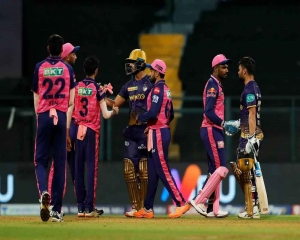In a tragic turn of events that unfolded in the early hours of Thursday morning in Sultanpur Lodhi, Kapurthala, a deadly clash erupted between Punjab Police and Nihang Sikhs, resulting in the death of Home Guard Jawan Jaspal Singh and injuries to four policemen. The violent confrontation was centered around the longstanding dispute over the possession of Gurdwara Akal Bunga Sahib, a revered Sikh shrine.
The roots of the conflict trace back to a simmering feud between two factions of Nihangs, a Sikh warrior sect characterized by their distinctive blue robes and traditional weapons. The two factions, led by Baba Mann Singh and Baba Balbir Singh, had been embroiled in a dispute over the management and control of Gurdwara Akal Bunga Sahib. The latter had been overseeing the gurdwara for several years, but tensions reached a boiling point when, on November 21, a group of 15-20 Nihangs affiliated with the Baba Mann Singh faction forcibly took control of the religious site.
The incident on Thursday morning unfolded when a police team was dispatched to reclaim the gurdwara from the Baba Mann Singh faction. The situation quickly escalated into an unprovoked firing, with over 60 rounds exchanged between the police and the Nihangs from 4:30 am to 6:30 am. Tragically, Home Guard Jawan Jaspal Singh lost his life in the crossfire after the police hit his head, while four other policemen sustained injuries, including two with severed hands.
In response to the violence, the police used tear gas shells to disperse the Nihangs, who retaliated by hurling stones. The clash underscored the gravity of the situation, prompting the arrest of five individuals connected to the Baba Mann Singh faction. Additionally, two licensed weapons used in the firing were recovered, leading to the registration of a murder case, and an ongoing investigation by law enforcement.
The incident has sent shockwaves through the community, prompting Punjab Chief Minister Bhagwant Mann to express profound grief over Jaspal Singh’s death. In a gesture of support, the Chief Minister announced a compensation of Rs two crore for the bereaved family. The tragedy looms large over the region, especially as it occurred just days before the birth anniversary of Guru Nanak Dev, the founder of Sikhism.
Efforts to defuse the escalating tensions involved high-ranking police officials, including Special DGP Arpit Shukla, additional DGP GS Dhillon, DIG S Bhoopati, DIG Rajpal Singh, and Kapurthala Deputy Commissioner Karnail Singh, rushed to the spot; and engaged in talks with the Baba Mann Singh faction.
After a two-hour meeting, an agreement was reached wherein the faction agreed to vacate the gurdwara. To ensure a smooth transition and prevent further unrest, a government employee will be appointed as a receiver under Section 145 of the Code of Criminal Procedure. “Under section 145 (procedure where dispute concerning land or water is likely to cause a breach of peace), a receiver, who will be a government employee, will be appointed to manage the gurdwara,” said the DC Karnail Singh.
The clash in Sultanpur Lodhi is not an isolated incident. It follows a recent altercation where Nihangs from the Baba Mann Singh faction attempted to seize control of another religious site in Bussowal village, leading to several arrests. In the midst of conflicting narratives, Nihangs alleged they were first attacked by the police at 4:30 am, while the police maintain that the firing was unprovoked.
Both factions will have the opportunity to present their claims over the gurdwara property, emphasizing the need for a comprehensive resolution to prevent further loss of life and maintain peace in the region. The incident also carries echoes of historical clashes involving Nihangs, including a fatal incident in 2020 when a Nihang protester chopped off the hand of a police officer in Patiala during a COVID-19 lockdown enforcement.
“There was an unprovoked firing at the policemen after they reached here on Thursday morning…A murder case has been registered. Five people have been arrested and weapons recovered,” said special DGP Shukla, adding that further investigation was underway.
Shukla, along with DIG Rajpal Sandhu, S Bhoopathi attend the last rites of deceased Punjab Home Guards jawan at Maniala village of Sultanpur Lodhi. Shukla promised Punjab Police job to the son of the deceased constable and gainful employment to the second son.
Who are Nihang Sikhs?
Nihang Sikhs, recognized by their distinctive blue robes, antiquated swords, and decorated turbans, are a unique order within the Sikh community. The term ‘Nihang’ is believed to originate from the Sanskrit word ‘nihshank’, meaning courageous, unblemished, pure, and carefree.
The order’s roots can be traced back to Guru Gobind Singh’s Khalsa in 1699; or his son Fateh Singh (1699 to 1705), who distinguished by his majestic blue chola and turban — an attire foreseen by Guru Gobind Singh as “the dress of the Nihangs”.
While theories about their origin exist, historical evidence remains elusive. The Nihangs, also known as Dal Khalsa, consider themselves ‘Guru Ki Fauj’ (the Guru's army) and align their customs and practices with their unique beliefs. Originating from either Fateh Singh or the Akal Sena initiated by Guru Hargobind, the term ‘Nihang’ etymologically relates to Persian, meaning an alligator or a sword, or to Sanskrit, signifying fearlessness.
In Sikh history, Nihangs played a crucial role as fierce warriors, winning battles even when outnumbered. They formed small armies within the Sikh Empire known as the Sikh Khalsa Army. In the modern context, Nihangs see themselves as torchbearers of their forefathers’ traditions, embodying qualities of commitment, fearlessness, boldness, struggle, and justice.
Within the Nihang order, divisions exist in the form of ‘dals’ or ‘forces’, with ‘The Buddha Dal’ and the ‘Taruna Dal’ being the most significant. Recognizable by their unique navy blue attire, chosen by Guru Gobind Singh after conflicts with Mughal Governor Vazir Khan, Nihangs wear a ‘Khalsa Swarupa’. Their attire includes distinctive ‘dumalla’ turbans, lofty and conical, and iron bracelets known as ‘jangi kara’.
As warriors, Nihangs are associated with carrying weapons, such as the dori kirpan — an open blade, or the pesh kabaz — a predecessor to the modern kirpan. Fully armed, they carry either one or two swords, the curved talwar or the straight khanda. Their attire and practices align with their historical significance in Sikhism, making them a distinct and recognized order within the broader spectrum of the religion.

























